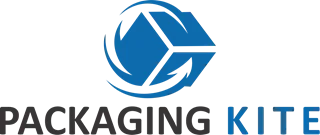**What Is UV Coating and What Are Its Drawbacks?**
When it comes to packaging, there are many options to choose from, each with its own unique benefits and drawbacks. One popular choice is UV coating, a process used to add an extra layer of protection and aesthetics to packaging materials. In this article, we’ll explore what UV coating is, how it works, and its limitations. By the end of this article, you’ll have a better understanding of whether UV coating is right for your packaging needs.
What Is UV Coating?
UV coating, also known as ultraviolet coating, is a printing technology that uses ultraviolet light to cure and dry a specialized coating onto your packaging material. This coating can be clear, matte, or glossy, and it’s commonly used to add a protective barrier to products like books, magazines, and food packaging. At Discounted Packaging, we often work with clients who are looking for ways to make their packaging stand out, and UV coating is a popular choice for its durability and visual appeal.
How Does UV Coating Work?
The UV coating process involves several steps. First, a specialized coating is applied to the packaging material using a roll-to-roll or sheet-fed printer. The coating is then exposed to ultraviolet light, which causes it to dry and harden, bonding it to the packaging material. This process is quick and efficient, making it a popular choice for high-volume production runs.
One of the benefits of UV coating is its ability to provide a high-gloss finish that can enhance the appearance of your packaging. This is especially important for products that are often displayed or used in settings where aesthetics are important, such as food packaging or luxury goods.
What Are the Drawbacks of UV Coating?
While UV coating has many benefits, it’s not without its drawbacks. One of the main limitations of UV coating is its cost. The process requires specialized equipment and materials, which can increase the overall cost of production. Additionally, UV coating can be slow and labor-intensive, especially for small or complex print runs.
Another drawback of UV coating is its potential impact on the packaging material itself. Some materials, such as thin papers or plastics, may not be suitable for UV coating, as the curing process can cause them to warp or become brittle. This is an important consideration when choosing the right packaging material for your product.
Is UV Coating Right for My Packaging Needs?
Whether or not UV coating is right for your packaging needs depends on your specific requirements. If you’re looking for a durable, high-gloss finish that will protect your packaging material and enhance its appearance, UV coating may be a good choice. However, if you’re on a tight budget or working with sensitive materials, you may want to consider alternative options.
At Discounted Packaging, we’re committed to helping our clients find the right packaging solution for their needs. Whether you’re looking for UV coating or another packaging option, we have the knowledge and expertise to guide you through the process. Contact us today to learn more about our packaging services and let us help you take your packaging to the next level.
**Conclusion**
UV coating is a popular packaging option that offers a range of benefits, from durability and visual appeal to protection and sustainability. While it may not be the right choice for every packaging need, it’s an important consideration for any company looking to enhance the appearance and performance of their packaging materials. By understanding the advantages and limitations of UV coating, you’ll be better equipped to make an informed decision about whether it’s right for your business.



